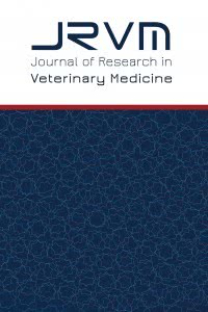Merkezi ve Yerinde Atıksu Geri Kazanımının Karşılaştırılması: Bir Turizm Bölgesi için Örnek Çalışma
CENTRALIZED VERSUS DECENTRALIZED WASTEWATER REUSE: A CASE STUDY FOR A TOURISTIC AREA
___
- Asano, T. (2005). Urban water recycling, Water Science and Technology, 51 (8), 83-89.
- Bohdanowicz, P., Ivo, M. (2007). Determinants and benchmarking of resource consumption in hotels—Case study of Hilton International and Scandic in Europe, Energy and Buildings, 39 (1), 82-95. doi:10.1016/j.enbuild.2006.05.005
- Chen R., Wang X.C. (2009). Cost–benefit evaluation of a decentralized water system for wastewater reuse and environmental protection, Water Science and Technology, 59 (8), 1515-1522. doi: 10.2166/wst.2009.156
- Tortella, B.D., Dolores, T. (2011). Hotel water consumption at a seasonal mass tourist destination. The case of The Island of Mallorca, Journal of Environmental Management, 92 (10), 2568-2579. doi:10.1016/j.jenvman.2011.05.024
- Gonzales, P., Ajami, N.K. (2017). An integrative regional resilience framework for the changing urban water paradigm, Sustainable Cities and Society, 30, 128–138. doi:10.1016/j.scs.2017.01.012
- Hocaoglu S.M. (2017). Evaluations of on-site wastewater reuse alternatives for hotels through water balance, Resources, Conservation and Recycling, 122, 43-50. doi:10.1016/j.resconrec.2017.01.022
- Hong, S.W., Choi, Y.S., Kim, S.J., Kwon, G. (2005). Pilot-testing an alternative on-site wastewater treatment system for small communities and its automatic control. Water Sci. Technol. 51, 101-108. doi:10.2166/wst.2005.0356
- Joustra, C., Yeh, D. (2014). Demand and source-driven prioritization framework towards integrated building water management (IBWM). Sustainable Cities and Society, 14, 114- 125. doi:10.1016/j.scs.2014.08.009
- Chu, J., Chen, J., Wang, C., Fu, P. (2004). Wastewater reuse potential analysis: implications for China's water resources management, Water Research, 38 (11), 2746-2756. doi: 10.1016/j.watres.2004.04.002
- . Kujawa-Roeleveld, K., Zeeman, G. (2006). Anaerobic treatment in decentralised and source-separation-based sanitation concepts, Rev. Environ. Sci. Biotechnol. 5, 115-139. doi:10.1007/s11157-005-5789-9
- Lamichhane, K.M. (2007). On-site sanitation: A viable alternative to modern wastewater treatment plants, Water Sci. Technol. 55, 433-440. doi:10.2166/wst.2007.044
- Larsen, T.A., Alder, A.C., Eggen, R.I.L., Maurer, M., Lienert, J. (2009), Source separation: Will we see a paradigm shift in wastewater handling?, Water Sci. Technol. 43, 6121-6125. doi:10.1021/es803001r
- Larsen, T.A., Maurer, M. (2011). Source separation and decentralization. In:Wilderer, Peter (Ed.), Treatise on Water Science. Elsevier, Oxford, 203-229. doi:10.1016/B978-0-444- 53199-5.00083-X
- Libralato, G., Ghirardini, A.V., Avezzù, F. (2012). To centralise or to decentralise: An overview of the most recent trends in wastewater treatment management, Journal Of Environmental Management, 94, 61-68. doi:10.1016/j.jenvman.2011.07.010
- Onucyildiz, M., Sevimli, M.F., Gorgulu, G. (2008). Evaluation of decentralized and centralized wastewater treatment plants, 8th International Scientific Conference on Modern Management of Mine Producing, Geology and Environmental Protection, SGEM, 1, 651- 658.
- Otterpohl, R., Braun, U., Oldenburg, M. (2003). Innovative technologies for decentralized wastewater management in urban and peri-urban areas, Water Sci. Technol. 48, 23-32.
- Roefs, I., Meulman, B., Vreeburg, J. H. G., Spiller, M. (2017). Centralised, decentralised or hybrid sanitation systems? Economic evaluation under urban development uncertainty and phased expansion, Water Research, 109, 274-286. doi:10.1016/j.watres.2016.11.051
- Singh, N.K., Kazmi, A.A., Starkl, M. A. (2015). Review on full-scale decentralized wastewater treatment systems: Techno-economical approach, Water Science and Technology, 71 (4), 468-478. doi: 10.2166/wst.2014.413.
- Tchobanoglous, G., Ruppe, L., Leverenz, H., Darby, J. (2004). Decentralized wastewater management: challenges and opportunities for the twenty-first century, Water Sci. Technol 4, 95-102. doi.10.2166/ws.2004.0011
- Wang, X.C., Chen, R., Zhang, Q.H., Li, K. (2008). Optimized plan of centralized and decentralized wastewater reuse systems for housing development in the urban area of Xi’an, China, Water Science and Technology 58 (5), 969-975. doi: 10.2166/wst.2008.456.
- Werner, C. (2004). Ecological sanitation–principles, urban application and Challenges, Report at UN Commission on Sustainable Development, 12th Session - New York, 14-30 April, USA.
- Woods, G.J., Kang, D., Quintanar, D.R., Curley, E.F., Davis, S.E., Lansey, K.E., Arnold, R.G. (2013). Centralized versus decentralized wastewater reclamation in the Houghton area of Tucson, Arizona, Journal of Water Resources Planning and Management, 139 (3), 313- 324. doi: 10.1061/(ASCE)WR.1943-5452.0000249
- ISSN: 2148-4147
- Yayın Aralığı: 3
- Başlangıç: 2002
- Yayıncı: BURSA ULUDAĞ ÜNİVERSİTESİ > MÜHENDİSLİK FAKÜLTESİ
Aslı Cansu ELİTAŞ, F. Olcay TOPAÇ ŞAĞBAN
SANAYİ KAYNAKLI KARBONMONOKSİT SALINIMLARININ AERMOD DAĞILIM MODELİ İLE NCELENMESİ
Akım ve Sediment Yük Öngörümü İçin Doğrusal Genetik Programlamanın Uygulanması
Ali Ünal ŞORMAN, Ali DANANNDEH MEHR
Ayırıcı Plakalı Bir Kare Prizma Etrafındaki Akışta Hücum Açısının Etkisi
Yahya Erkan AKANSU, Mehmet SEYHAN, Mustafa SARIOĞLU
TAKAGİ-SUGENO BULANIK COHEN-GROSSBERG TİPİ ZAMAN GECİKMELİ YAPAY SİNİR AĞLARINDA KARARLILIK ANALİZİ
Neyir ÖZCAN SEMERCİ, Samet BARIŞ
PEM YAKIT PİLİNİN SİMULİNK MODELİ ve ANALİZİ
AYIRICI PLAKALI BİR KARE PRİZMA ETRAFINDAKİ AKIŞTA HÜCUM AÇISININ ETKİSİ
Mehmet SEYHAN, Mustafa SARIOĞLU, Yahya Erkan AKANSU
AKIM VE SEDIMENT YÜK ÖNGÖRÜMÜ İÇIN DOĞRUSAL GENETIK PROGRAMLAMANIN UYGULANMASI
